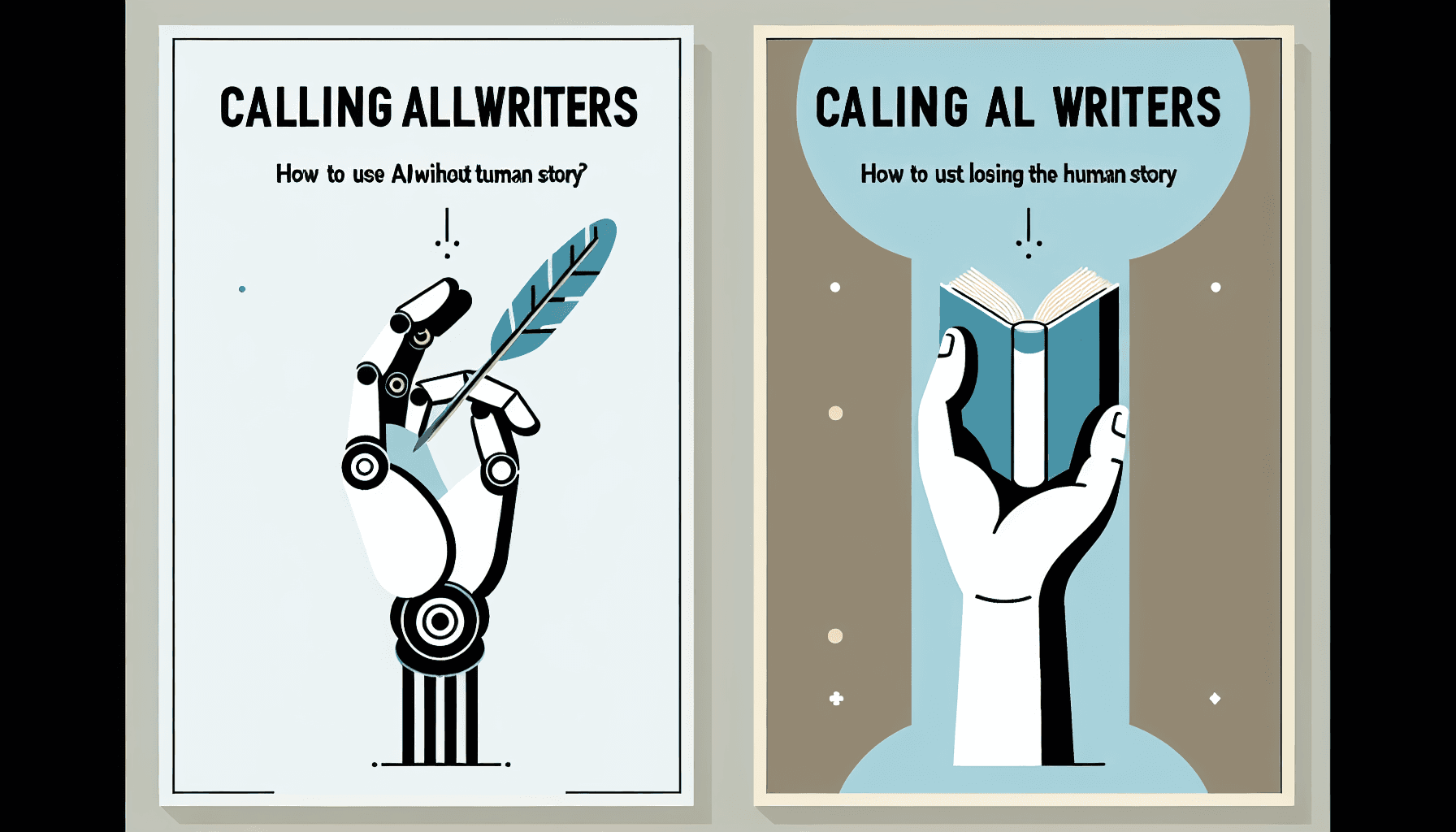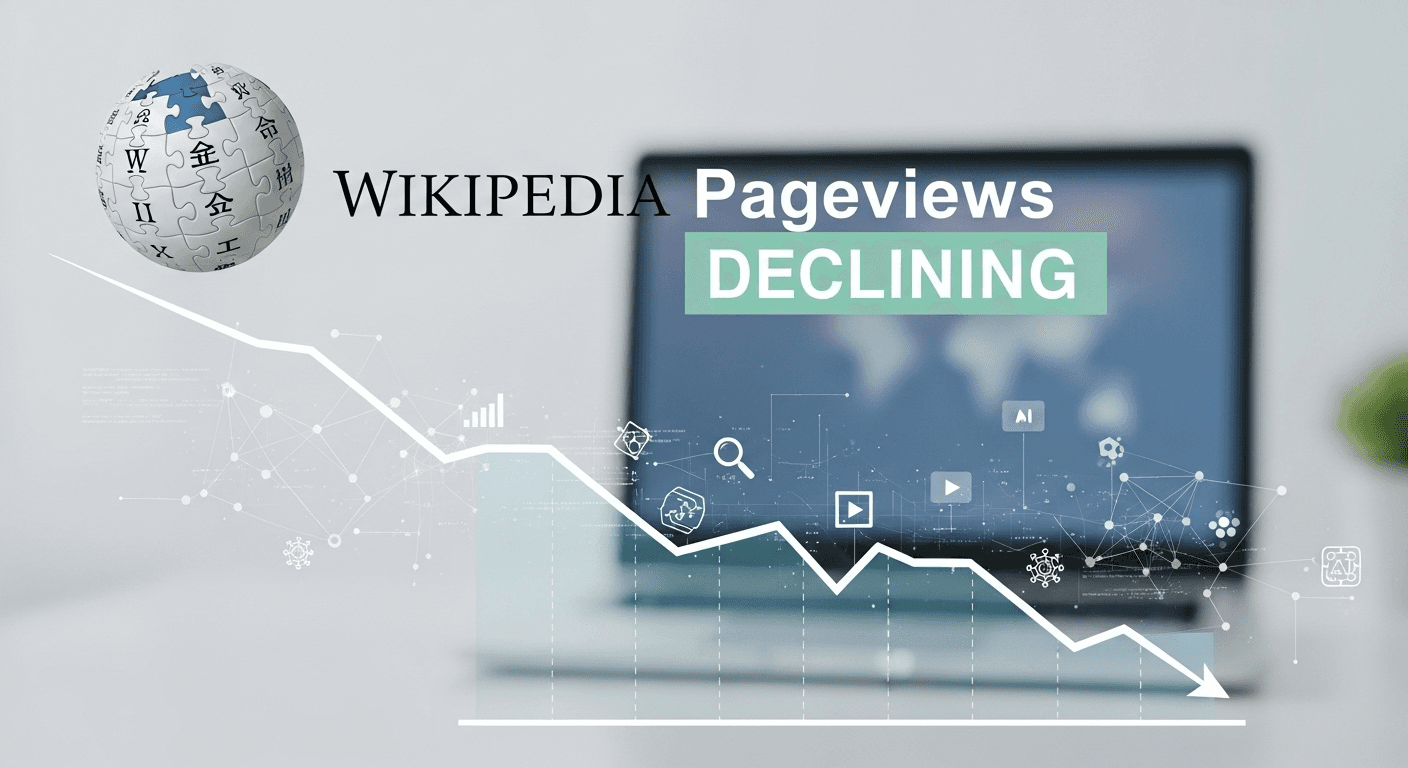Calling All Writers: How To Use AI Without Losing The Human Story

Tell us what you think
AI is changing how people draft, edit, and share stories. That is exciting – and also complicated. We want your feedback: how can writers use AI to tell more human stories while protecting trust, credit, and creativity?
Below, you will find a practical framework, examples, and questions for the community. Please share your perspective: what has worked for you, what has not, and what guardrails you want to see.
Why this conversation matters
Generative AI is now part of many creative workflows. Studies suggest it can speed up writing and improve drafts, especially for early ideation and editing. In a field experiment, knowledge workers using AI completed writing tasks faster and with higher-quality results on average, though effects varied by task type (Noy & Zhang, 2023). The Stanford AI Index also notes rapid adoption of generative tools across industries (Stanford HAI, 2024).
At the same time, readers are cautious. The Reuters Institute reports that people worry about AI-generated misinformation and prefer transparency when AI is used in news and storytelling (Reuters Institute, 2024). Trust is fragile – and worth protecting.
What good looks like: principles for human-centered AI writing
- Be transparent. Disclose when and how AI assisted your work, especially beyond basic spelling or grammar. Clear disclosures build trust (FTC staff perspective).
- Keep authorship human. Your reporting, analysis, taste, and voice make the story. Use AI to support, not replace, the human point of view.
- Attribute and link sources. Always cite human sources and data. If AI suggests a claim, verify it first and link to the original source.
- Protect privacy and safety. Avoid pasting sensitive interviews, confidential documents, or private data into tools that may log inputs. Remove personal identifiers or use offline models when needed.
- Stress test for bias. AI models can amplify stereotypes and skew coverage. Audit language and framing, and invite diverse review (HELM evaluations).
- Show your work. Wherever possible, share notes, methods, and provenance. Open standards like C2PA can help readers see how content was made (C2PA).
- Follow established ethics. The Society of Professional Journalists code remains a strong compass for accuracy, fairness, and accountability (SPJ Code).
Where AI can help writers today
1) Finding and shaping ideas
- Topic brainstorming and angles based on audience needs.
- Outlining complex topics into sections and summaries.
- Headline and deck variations for testing.
Use it for breadth, then narrow with your judgment and reporting.
2) Research acceleration – with verification
- Backgrounders and glossaries to level-set quickly.
- Lists of potential sources, papers, and datasets. Always click through and confirm citations before using them.
- Question lists for interviews and field reporting.
Hallucinations remain a risk. Build a habit of checking every claim against primary sources or reputable outlets (Reuters Institute, 2024).
3) Drafting and revision
- Turning notes into a first-pass draft or a structured scene list.
- Line editing for clarity, concision, tone, and reading level.
- Alternative phrasing to reduce jargon or increase accessibility.
Evidence suggests AI can reduce time to a decent draft, freeing you to improve narrative, accuracy, and voice (Noy & Zhang, 2023).
4) Accessibility and reach
- Summaries, TLDRs, and glossaries for non-expert readers.
- Translations and localized examples. Always have a human review for nuance.
- Assistive outputs like audio narration or alt text for images.
5) Packaging and provenance
- Generate social copy and newsletter blurbs tailored to platforms.
- Add content credentials or provenance metadata when your tools support it (C2PA).
What to avoid
- Over-reliance. If every paragraph reads like a template, your unique perspective is missing. Keep your fingerprints on the work.
- Unverified claims. Never publish AI-generated facts, quotes, or citations without checking them.
- Style imitation without consent. Do not prompt tools to mimic living writers or artists who have not agreed to it.
- Privacy leaks. Do not paste unpublished manuscripts, source lists, or sensitive notes into tools that are not designed to keep them private.
- Generative spam. Do not flood readers with low-value, high-volume content. It erodes trust and discoverability.
A simple workflow you can adapt
- Define intent: audience, outcome, constraints.
- Ideate with AI: collect options, then pick one human-led angle.
- Outline: ask for structure suggestions, then customize.
- Report and verify: do interviews, gather documents, and check all claims.
- Draft: write in your voice. Use AI for refactoring and clarity.
- Sensitivity and bias check: ask for critiques from AI and humans.
- Provenance and disclosure: add citations, content credentials when possible, and a clear note on how AI helped.
- Publish, measure, iterate.
Example prompts you can try
Help me outline a 1,200-word feature for curious non-experts about [topic]. Suggest 3 structures, key questions to answer, and potential visuals.
Rewrite this paragraph for clarity and a conversational tone without losing the technical meaning. Suggest 2 alternatives and explain trade-offs.
Identify potential gaps or biases in this draft, especially representation, assumptions, and missing perspectives. Propose fixes.
Ethics, law, and evolving standards
Guidelines and regulations are changing quickly. A few signals worth tracking:
- Transparency and impersonation. Regulators are paying attention to deceptive synthetic media. The U.S. FTC has moved to curb impersonation and emphasizes clear disclosures in advertising and endorsements (FTC, 2024).
- Education and practice. UNESCO encourages human oversight, data protection, and transparency when deploying generative AI in learning contexts – good principles for writers too (UNESCO, 2023).
- Content provenance. The C2PA standard enables attaching verifiable metadata about how digital content was created and edited (C2PA).
Community standards will keep evolving. Our shared goal: readers should understand what they are seeing, why they should trust it, and how to go deeper.
Questions for you – we want your feedback
- Where has AI made your writing better, faster, or more inclusive? Be specific.
- When did AI fail you – and what would have prevented that?
- How should writers disclose AI assistance in a way that is honest and unobtrusive?
- What protections do you want around training data, consent, and attribution?
- What features or standards would help you keep stories human?
Measuring what matters
It is not just about speed. Consider metrics that capture human value:
- Reader trust signals: completion rates, shares with comments, return visits, and direct feedback.
- Quality indicators: fewer corrections post-publication, stronger sourcing, and diversity of perspectives.
- Accessibility: reading ease, translation accuracy, and helpful summaries.
Conclusion
AI can be an accelerant for human storytelling – not a substitute for it. With clear disclosure, rigorous verification, and a commitment to voice and values, writers can use these tools to serve readers better.
We would love to hear how you are navigating this. Share a concrete example, a thorny question, or a principle you think should guide us all.
FAQs
How should I disclose AI use in my writing?
Be brief and specific. Example: “This story used AI for outline options and line edits. All facts were verified by the author.” Place it near the byline or footer.
What are the best uses of AI for writers?
Brainstorming angles, outlining, line editing for clarity, accessibility summaries, and packaging. Keep reporting, analysis, and final judgment human.
How do I fact-check AI outputs?
Trace every claim to a primary source or reputable outlet. If you cannot verify it, do not use it. Save your source list for transparency.
Will AI replace writers?
AI can automate routine tasks but struggles with original reporting, lived experience, and nuanced judgment. Most evidence points to human-AI collaboration, not replacement (Noy & Zhang, 2023).
How can I reduce bias when using AI?
Prompt for counterarguments and missing perspectives, use style guides that emphasize inclusive language, and have humans from different backgrounds review drafts (HELM).
Sources
- Noy, S., & Zhang, W. (2023). Experimental Evidence on the Productivity Effects of Generative Artificial Intelligence.
- Stanford HAI. (2024). AI Index Report.
- Reuters Institute. (2024). Digital News Report.
- U.S. FTC. Staff perspective on using AI in advertising (2023).
- U.S. FTC. Proposed rule to ban impersonation of individuals (2024).
- Coalition for Content Provenance and Authenticity (C2PA).
- Society of Professional Journalists. Code of Ethics.
- Stanford CRFM. HELM: Holistic Evaluation of Language Models.
- UNESCO. (2023). Guidance on Generative AI in Education and Research.
Thank You for Reading this Blog and See You Soon! 🙏 👋
Let's connect 🚀
Latest Blogs
Read My Latest Blogs about AI

Why Wikipedia’s Pageviews Are Declining: The Role of AI Search and Social Video
Wikipedia reports an 8% decline in human pageviews as AI search summaries and social video shape how people seek information. Here’s what the data reveals and why it matters.
Read more


